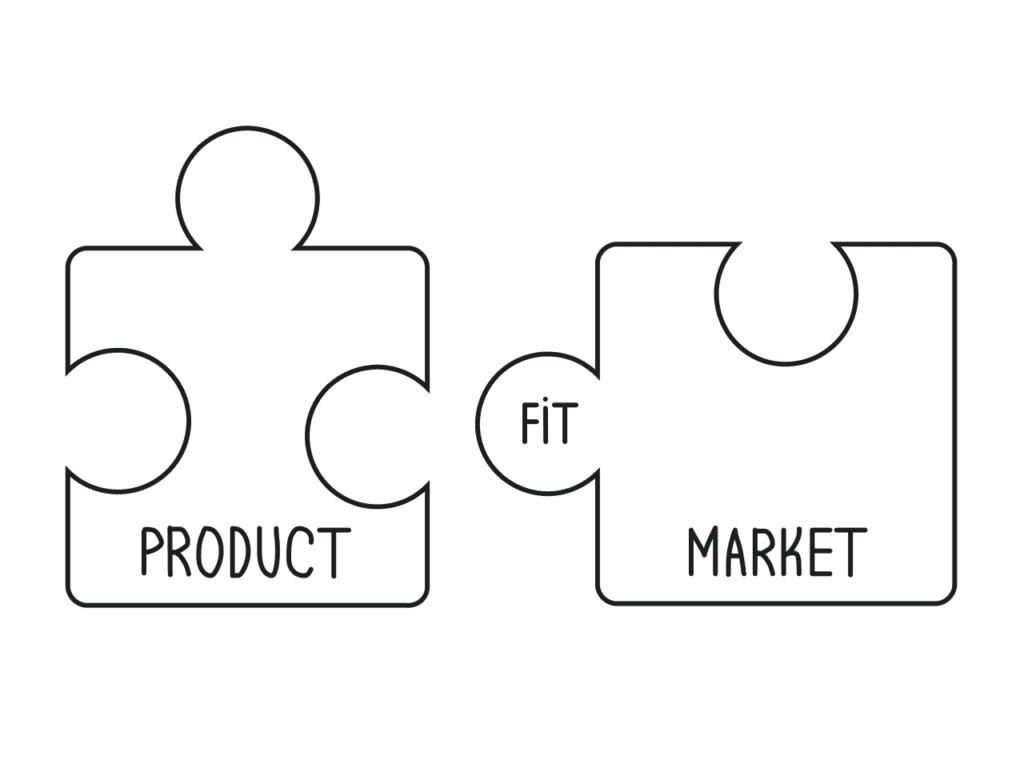
A Product Market refers to the group of potential customers who might be interested in buying a specific product, encompassing their desires, needs, and the challenges they face that the product could potentially solve; understanding these aspects is crucial for developing a successful product strategy by identifying the specific pain points and motivations of the target audience.
A product market fit refers to the point where a product satisfies a strong market demand. It means that the product solves a real problem for a specific group of customers, and they recognize the value in it, leading to sustainable customer acquisition, growth, and retention. Achieving product-market fit is often seen as one of the most critical milestones for startups or new products, as it signals that the product is well-aligned with market needs.
Business Experience
You’ll want to demonstrate a deep understanding of the market, customer desires and needs, and the challenges both the market and customers face. The Product Owner must recognize that their responsibilities extend beyond just delivering the product; they also encompass strategy, which involves understanding customer needs.
Can you explain your perspective on the Product Market, including what Customers Desire, Need, and the Challenges they face?
I believe a product market is primarily comprised of [target customer segment, e.g., small business owners]. These customers are looking for a solution that [key customer need or pain point, e.g., increase their online presence and drive more sales]. They desire a product that is [desired feature or benefit, e.g., user-friendly platform that is affordable and easy to manage].
However, they face several challenges, including [challenge 1 e.g. limited technical expertise], [challenge 2 e.g. time constraint], and [challenge 3 e.g. competition from larger businesses]. These challenges can hinder their ability to [specific goal or outcome e.g. effectively market their products or services online].
The product should address these challenges by providing [a unique selling proposition or value proposition, e.g., drag-and-drop website builder that requires no coding knowledge]. By [how the product solves the challenges, e.g., a variety of customizable templates], we aim to deliver a solution that not only meets our customers’ needs but also empowers them to grow their businesses and achieve their online goals.
Here is a detailed explanation of the product market, customers’ desires, needs, and challenges.
Customer Desires and Needs
Customers generally have specific desires and needs that drive their purchasing decisions. These can be broadly categorized into:
- Practical Needs: These include affordability, functionality, ease of use, and availability. Customers expect products to solve specific problems or fulfill particular functions efficiently.
- Emotional Needs: Products often need to resonate with customers on an emotional level, providing satisfaction, pride, or a sense of accomplishment.
- Social Needs: Products can also fulfill social needs by aligning with a customer’s lifestyle or enhancing their status among peers. They desire transparency and trust from the companies they engage with, especially when it comes to data privacy, customer support, and post-sale service.
Challenges Customers Face
Customers encounter various challenges when interacting with products, especially in the online shopping environment:
- Product Fit: One of the main challenges customers face is the overwhelming choice in the market, leading to difficulty in finding the right solution that perfectly fits their needs.
- Quality Issues: Customers often worry about the quality of products when shopping online due to unreliable reviews or misleading information from sellers.
- Technical Glitches: Problems such as payment errors or poor search functionality can frustrate customers during online transactions.
- Delivery Delays: Delayed deliveries can lead to dissatisfaction, especially if customers have paid for expedited shipping.
- Complex Return Policies: Difficulties in returning products or obtaining refunds can deter future purchases.
Tailor the specifics of this response to the actual market you’re discussing, highlighting the unique insights you have about the industry or the product in question. If you’re familiar with specific customer pain points or trends, incorporating that knowledge will make your answer stand out even more.
Product Manager Interview Questions and Answers – Part I: Click Here
Product Owner Interview Questions and Answers – Part I: Click Here
Product Owner Interview Questions and Answers – Part II: Click Here
Disclaimer: All the content related to Scrum Guide is taken from scrumguides.org and is under the Attribution ShareAlike license of Creative Commons. Further information is accessible at https://creativecommons.org/licenses/by-sa/4.0/legalcode and also described in summary form at http://creativecommons.org/licenses/by-sa/4.0/.
